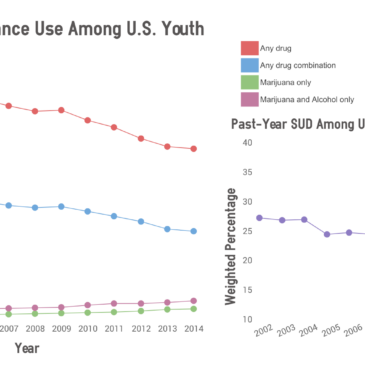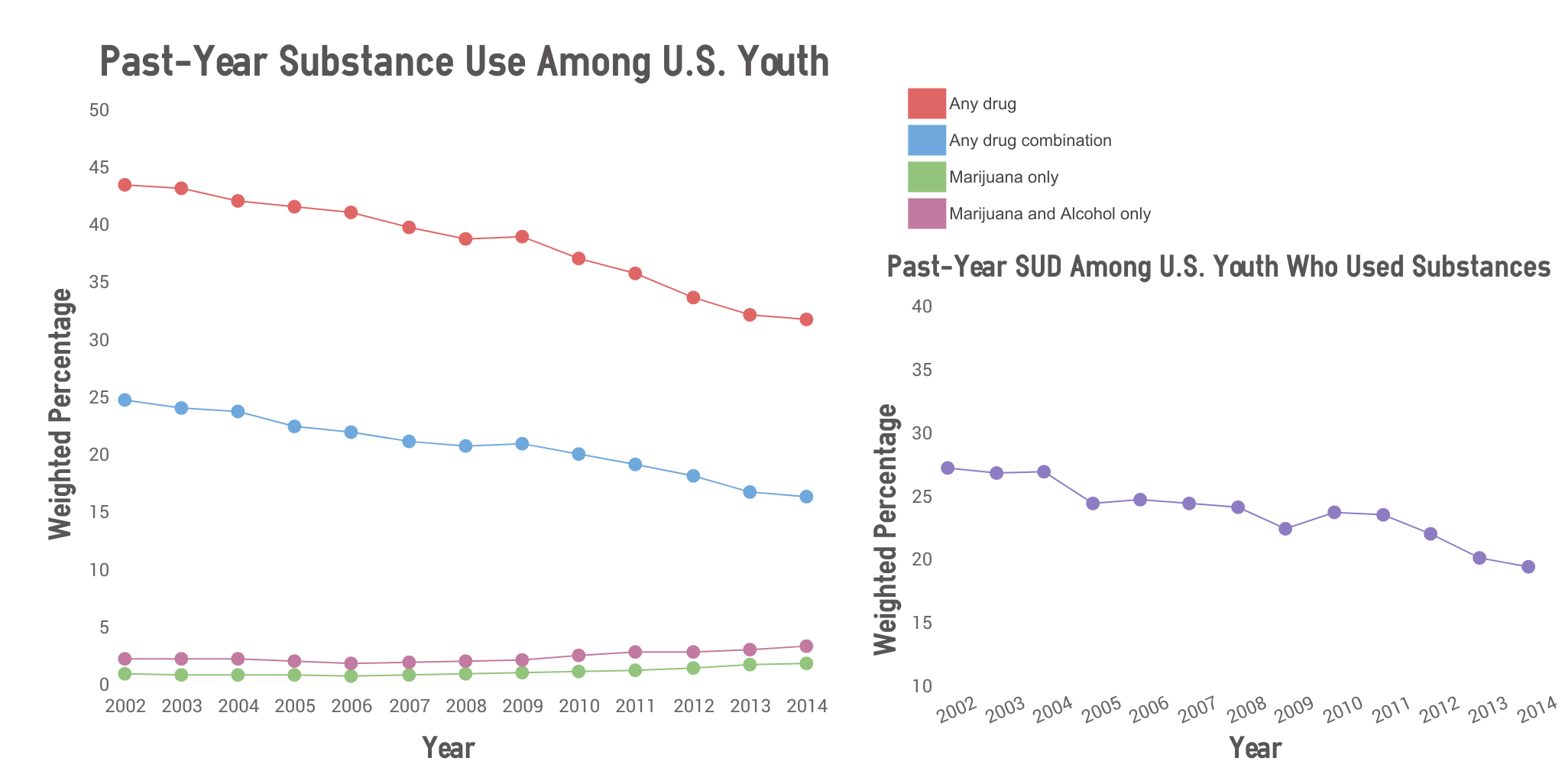Adolescence is a vulnerable period for developing addiction. People often have their first experiences with substances, such as alcohol, tobacco, or marijuana, during this time. For some youths these experiences do not result in much harm. For others, however, it may lead to mental or physical health harms, as well as social, financial, or legal repercussions. Understanding how adolescents use substances can guide public health decisions about how to prevent and treat substance use related harms. This week, STASH reviews a study by Beth Han and colleagues that examines national trends in youth substance use between 2002 and 2014.
What was the research question?
Have patterns of adolescent drug use and Substance Use Disorder (SUD) in the United States changed between 2002 and 2014?
What did the researchers do?
The researchers used data gathered from the National Surveys on Drug Use and Health (NSDUH), conducted from 2002 through 2014 by the Substance Abuse and Mental Health Services Administration (SAMHSA). Data collectors interviewed people from randomly-selected households all across the United States about their experiences with substance use and mental health symptoms in the past year. Han and her colleagues looked specifically at the responses from youths aged 12 through 17 and compared the prevalence of certain experiences from year to year using bivariate logistic regression.
What did they find?
As the figure shows, the proportion of adolescents who used any drug in the past year decreased from 43.2% in 2002 to 31.5% in 2014. The proportions of adolescents who used multiple drugs also decreased during this timeframe. However, rates of marijuana use, alone and in combination with alcohol, actually increased. Among adolescents who had used any drugs, the proportion who met diagnostic criteria for past year SUD decreased from 27.0% to 19.2%.
Figure. Annual prevalence of past-year substance use and SUD among adolescents in the U.S., NSDUH 2002-2014. Click image to enlarge.
Why do these findings matter?
Previous research has shown that people who begin using substances at an early age are at higher risk of experiencing addiction later in life. In addition, adolescent brains are more sensitive to potentially damaging effects from substance use. While substance use and SUD has largely decreased among adolescents, nearly a third of adolescents in 2014 had used substances in the past year, and of those, nearly a fifth met diagnostic criteria for a substance use disorder. Doctors who work with teenagers should remain vigilant in order to identify and mitigate the harms that adolescents who use substances might experience
Every study has limitations. What are the limitations in this study?
This study did not include individuals who were experiencing homelessness or incarceration. Youth experiencing homelessness or incarceration are at much higher risk of experiencing substance-use related harms than their peers. This means that the national trends reported in this study likely underreport the true prevalence of substance use behavior and SUD among teenagers in the U.S.
For more information:
SAMHSA provides a free national helpline for individuals and families seeking assistance with substance use or mental health issues. Free brochures for teenagers are also available.
— Rhiannon Chou Wiley
What do you think? Please use the comment link below to provide feedback on this article.






Ken C. Winters, Ph.D. August 7, 2018
Readers might be interested in this recent article by Levy and colleagues that looks at a similar question about adolescent drug use trends. Levy examined trends in abstaining from all drugs among HS students in the U.S, based on Monitoring the Future data.
Levy, S., Campbell, M. D., Shea, C. L., & DuPont, R. (2018). Trends in abstaining from substance use in adolescents: 1975–2014. Pediatrics, 142(2), e20173498.